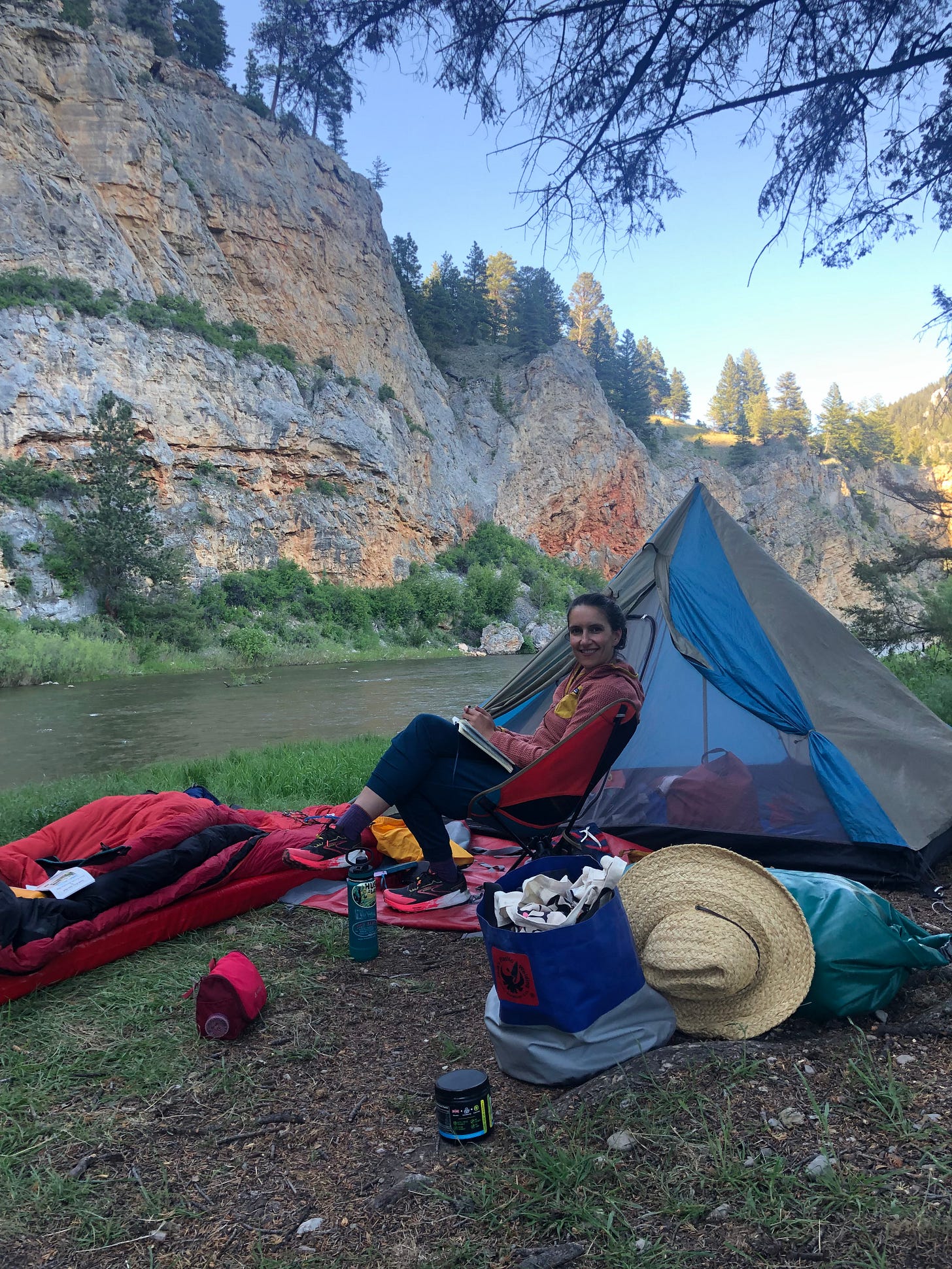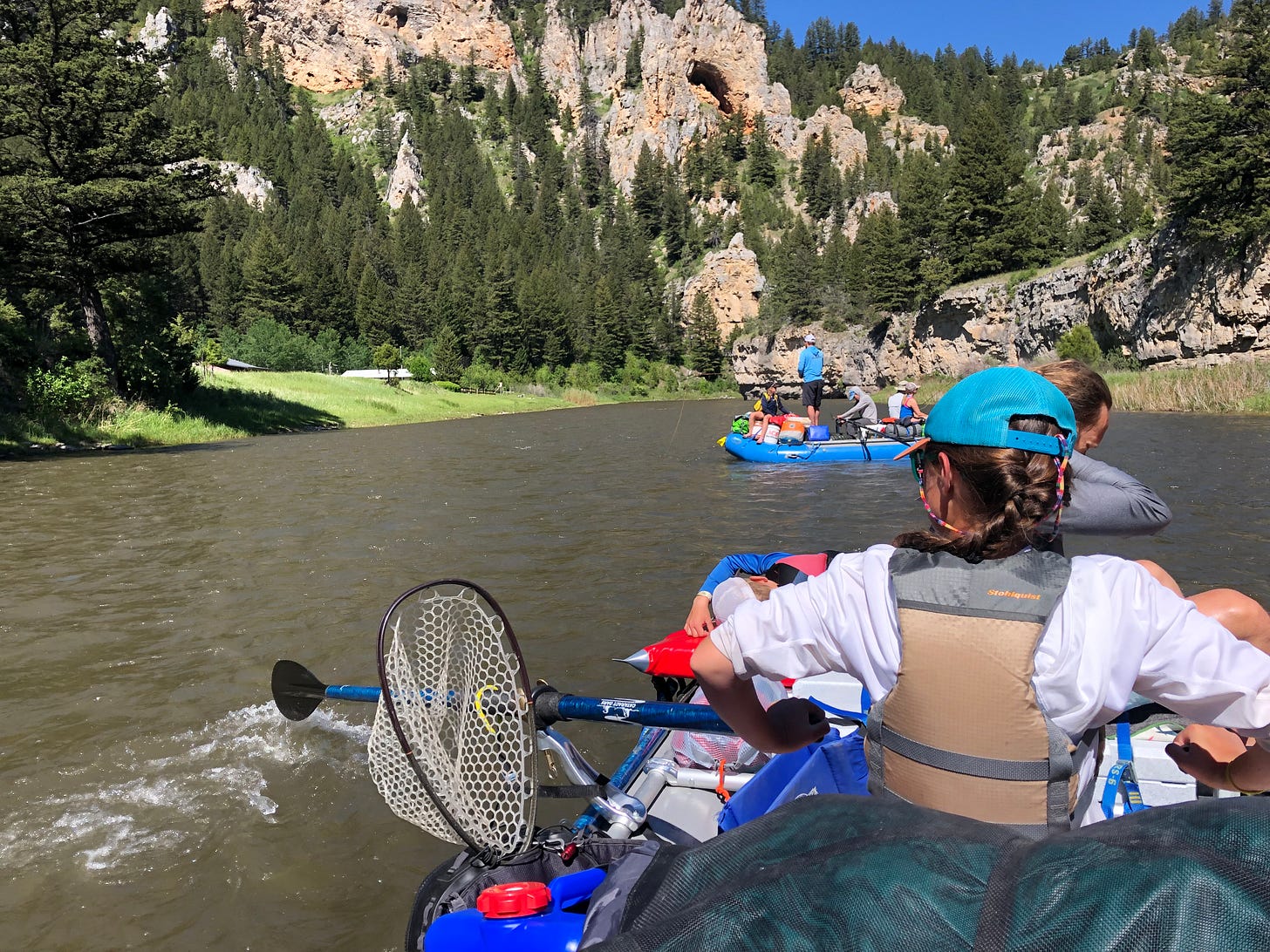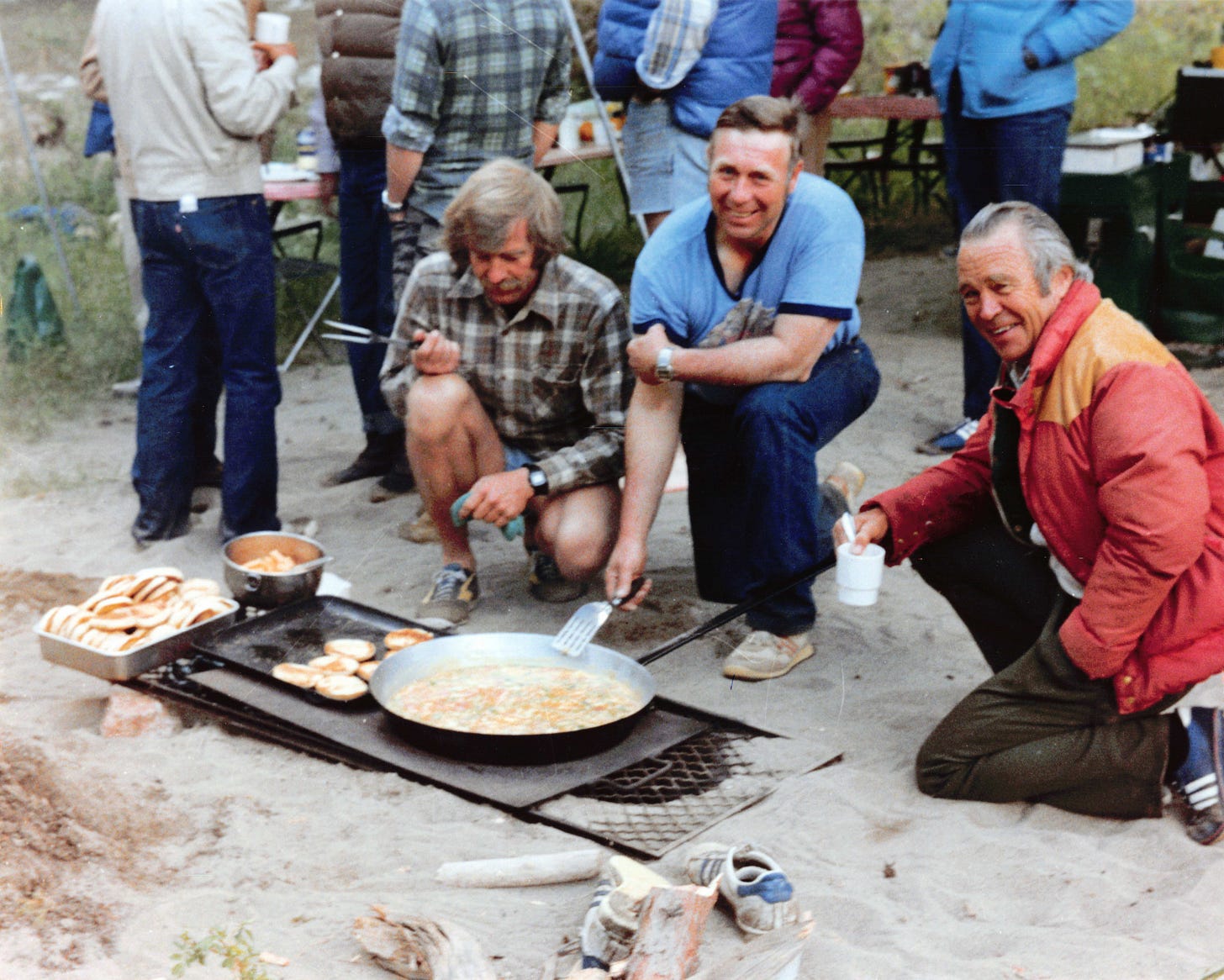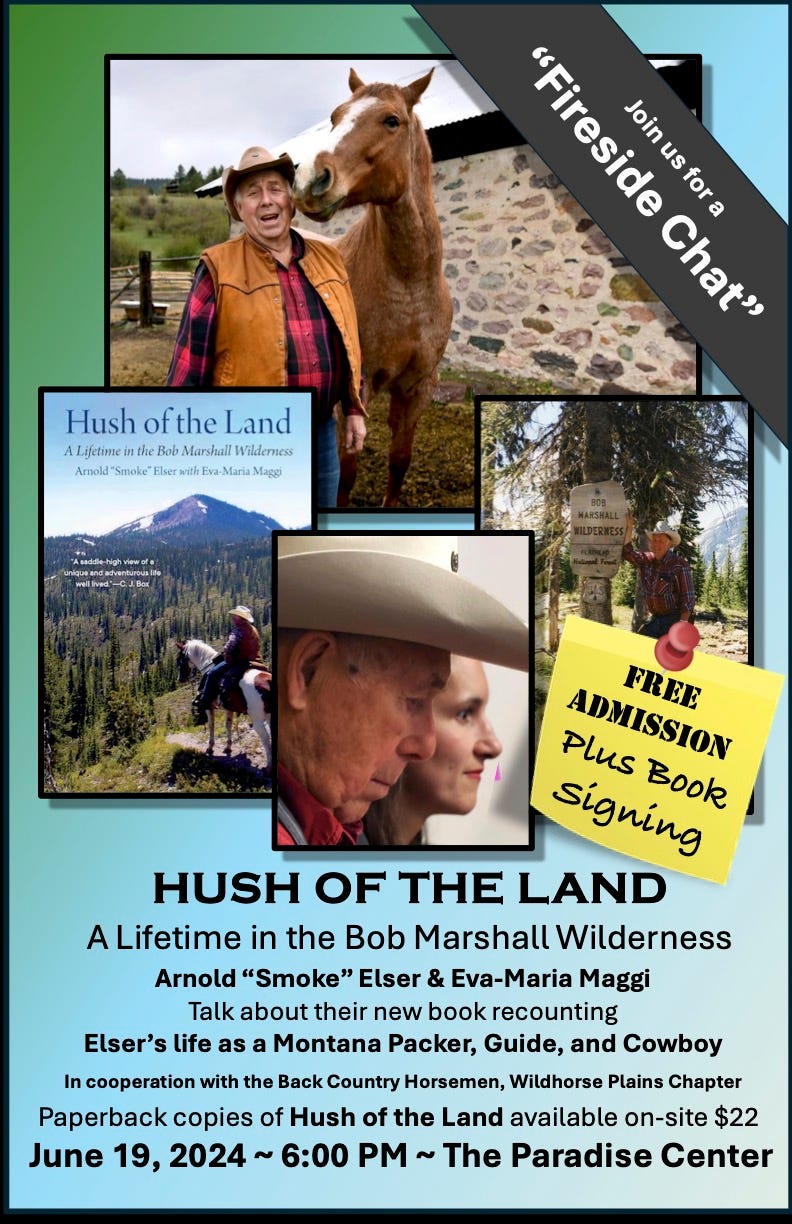Dear Reader,
Last week, the river was calling. After seven years of waiting, we had drawn a permit to float the magical Smith River in Montana. Each night as I watched the milky way, I felt like we won more than one lottery. The scenery was breathtaking, the weather flawless (a minor miracle in a Montana June), the company wonderful and full of laughter. I have never been to a place with so many birds. When I sat by the river, watching the cliff swallows feast on the latest hatch of salmon flies mid-air, two forks in my life merged into a single river.
Few people know, Smoke didn’t only outfitted horse trips in the Bob Marshall Wilderness. In the early days, he was also one of the first commercial outfitters on the Smith River. One spring day in the 1960s, Tom Collins, Director of the then new, University of Montana Foundation asked him to take a group of twelve Alumni and a few professors fishing. The Smith wasn’t very well known by recreationists back then, but already famed for the large, hungry trout. Named by Merriweather Lewis and William Clark after Robert Smith, Secretary of the Navy in 1805,1 the river is also called Deep Creek and was used extensively by the many Tribes (Salish, Kootenai, Crow, Blackfeet, and Gros Ventre among others) that thrived and traveled through the canyon for millennia.2 June is the best time to float the Smith and Smoke wasn’t busy yet so he loaded up the gear - tents, kitchen, food - and became a river guide. “I had never rowed a raft before,” he told me the other day. “But I learned quickly.” And as it happened, he could follow one of the best river paddlers in the country.
The meandering Smith River isn’t difficult to navigate, no rapids to speak of, but at high water the current swiftly pushes you into the limestone cliffs. John Craighead, then a university professor and better known for his pioneering work on the Yellowstone Grizzly Bear, could read the water better than anybody. He lead the university group safely downriver from White Sulphur Springs, north towards Great Falls and the Missouri. Probably pointing out each plant, birds, and the geology that floated by. They traveled sixty miles in five days, fished, and raised over a million dollars for the university along the way. Smoke and John became good friends and had many adventures together - a few I wrote about in our book “Hush of the Land” - but there is only one picture of the two of them together that I could find during my extensive research so far, and that is before breakfast at an unknown camp on the Smith River.
Sitting in camp last week, watching the water and swallows dance along the cliffs, I felt Smoke’s and John’s life merging. For the first time, I was ready for my new book project on the life of John Craighead and his twin brother Frank although I had already been working on it for over a year. And with a hand shake by the water, one story made space for the next.
Auf bald,
Eva
NEWS and upcoming EVENTS
Hot-off the press! MORE STICKERS - let me know if you would like one. info@evamaggi.com
Help us spread the word about “Hush of the Land” by writing a review (Amazon) here or (Goodreads) here.
EVENTS
TONIGHT!
Lincoln, MT, July 27, Sculpture in the Wild
Kalispell, MT, September 3, Flathead Valley Community College, 6-7:30pm (60th Anniversary of the Wilderness Act!)
2 x Bozeman, MT (!) - September & October, dates to follow soon
Seeley Lake, MT, December 6, Community Foundation Bldg, 2pm, hosted by Alpine Artisans
Virtual HUSH OF THE LAND Storytelling & Reading with book signing!
We are currently working on offering a virtual HUSH OF THE LAND Storytelling & Reading with book signing event. Please get in touch (info@evamaggi.com) if you would be interested in having us talk to your community or join your book club via zoom!
You can also find HUSH OF THE LAND on Facebook and Instagram.
Lewis, Merriweather, July 15, 1805, Journal of the Lewis & Clark Expedition. https://lewisandclarkjournals.unl.edu/item/lc.jrn.1805-07-15#lc.jrn.1805-07-15.01
Greer, Mavis Ann Loscheider. "Archaeological Analysis of Rock Art Sites in the Smith River Drainage of Central Montana." Order No. 9702074, University of Missouri - Columbia, 1995. https://weblib.lib.umt.edu:2443/login?url=https://www.proquest.com/dissertations-theses/archaeological-analysis-rock-art-sites-smith/docview/304214533/se-2. p. 82.








